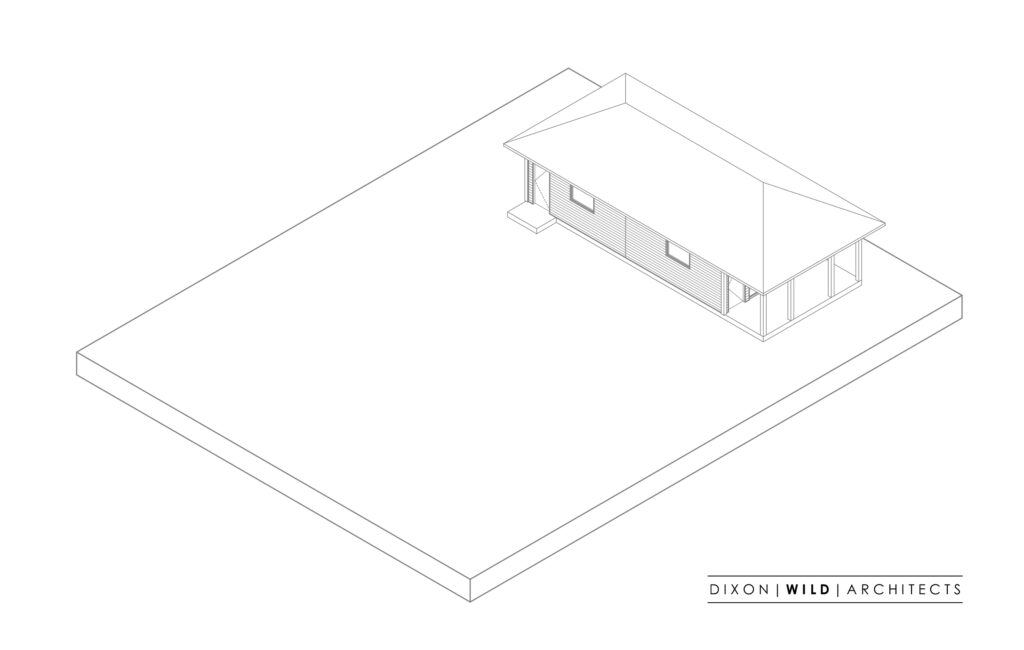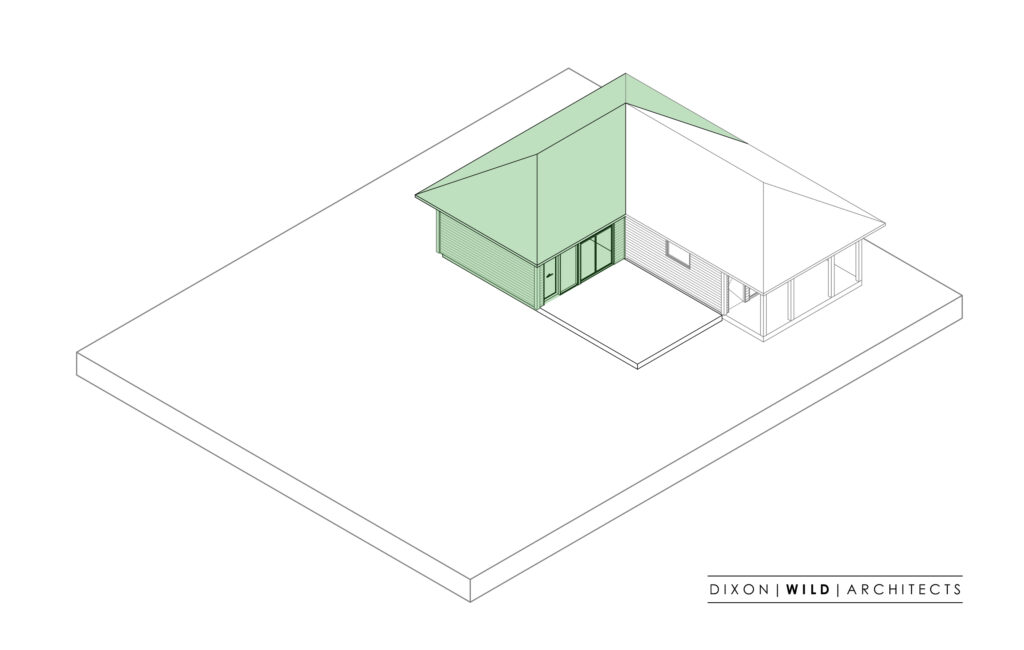There are two types of consents in New Zealand; resource consent and building consent. The local authority (council) grants both consent to allow building work to proceed.
Resource Consent
Written approval from the local council to carry out building work that may impact the environment or other people.
Altering the overall form or character of an existing dwelling requires a resource consent. An example of this could be an addition to an existing house.
Image 1: Illustration of an existing dwelling
Image 2: The existing dwelling with proposed addition (shown as green fill)
The addition increases the overall building coverage. Building coverage / footprint impacts the surrounding environment, as the roof area is considered impervious. Impervious areas do not allow rain water to seep into the ground, which can result in surface flooding. An addition can also alter the character of an existing dwelling. If the existing dwelling is a Victorian villa for example, there may be specific rules that govern how it can be altered.
Other examples that require a resource consent:
- New homes
- Site developments / subdivisions
- Earthworks
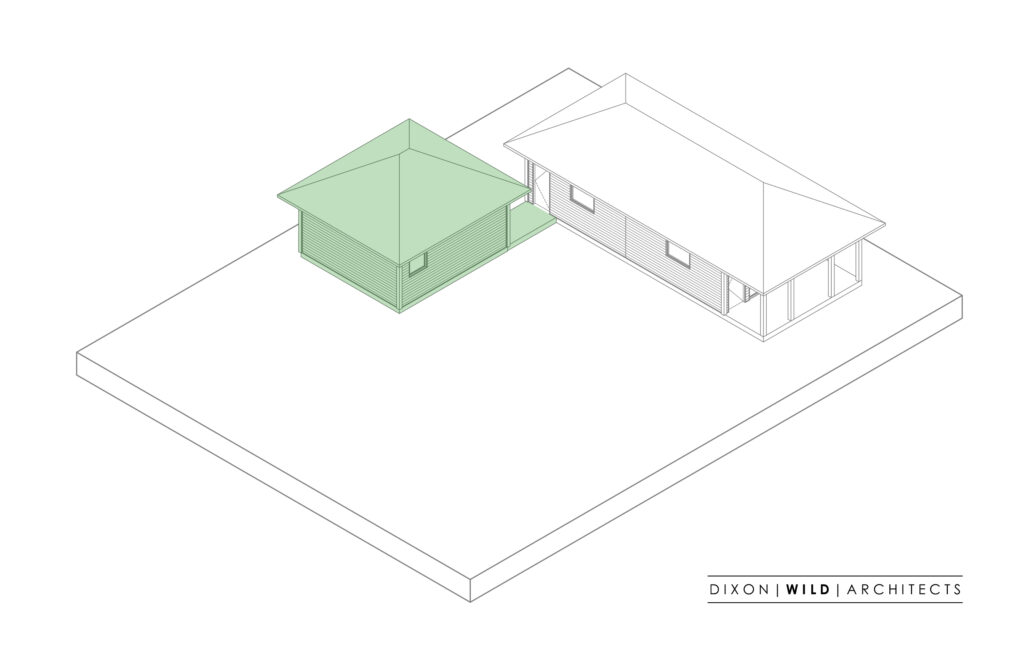
Image 3: Existing dwelling with proposed detached unit. Resource consent may be required, as the unit is considered an additional dwelling
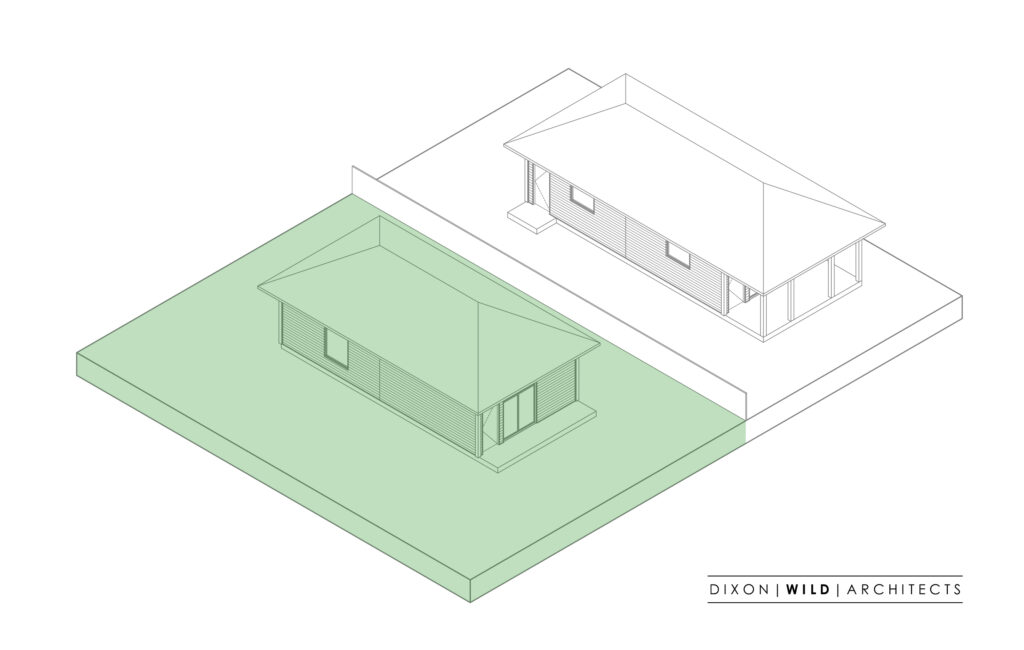
Image 4: The existing site sub-divided into two properties, with an additional proposed dwelling
If a resource consent is required, it must be applied for before a building consent. If the proposed work is completely internal, it may not require a resource consent – but a building consent may still be necessary.
Building Consent
Written approval from the local council to carry out specific building work; in accordance with the current building code / regulations.
Renovations, whether they are internal or external may require a building consent. Building work that requires building consent may include:
- Structural work: removal of load-bearing walls in an existing house or the construction of a new house
- Altering existing plumbing / drainage, or connecting into public drains
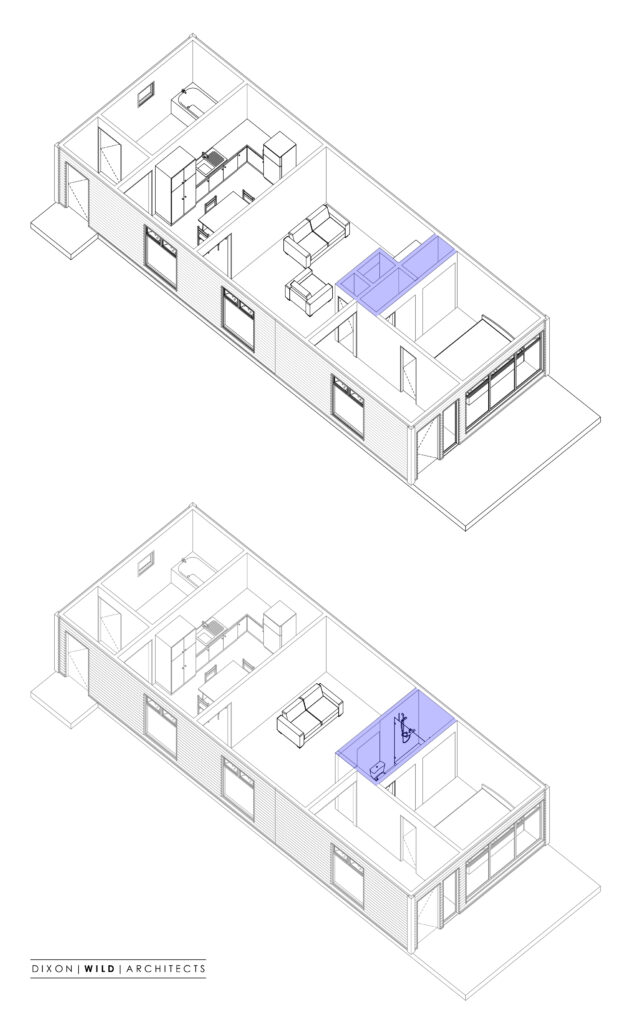
Image 5: Before and after illustrations, showing internal alterations. The addition of an en-suite is restricted building work and requires a building consent; but not resource consent
If the work is low risk or minor, an exemption to a building consent may be granted by the council. It is best to contact a trained professional, such as an Architect or builder before carrying out any building work.
WE ARE HERE TO HELP:
Dixon Wild Architects has extensive knowledge of building and planning regulations. We apply this knowledge when collating information and drawings for consent applications. We act as agents during the consent process: answering council queries and attending pre-application meetings when required. If you are still unsure if your project requires council approval, or you would like to work with us; we would be happy to help.
Links:
Auckland Council provides information on both resource and building consent.
Like us on Facebook for more information like this


